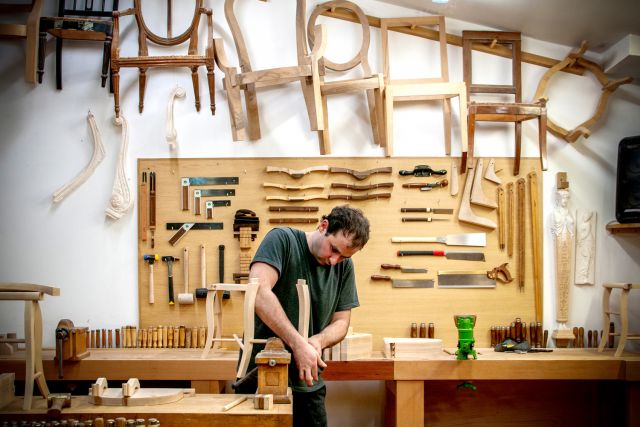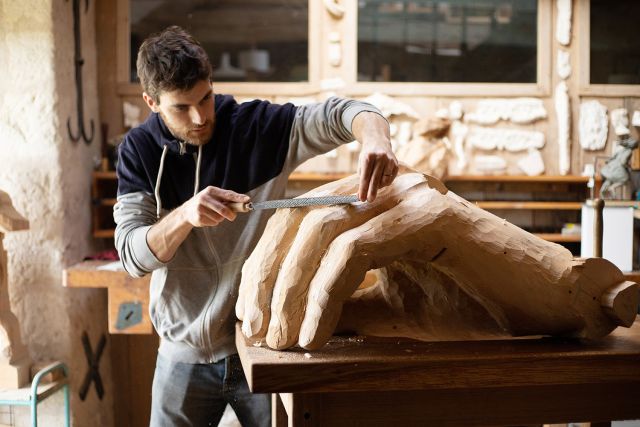This piece is entirely handmade, modelled and then sculpted. It is dressed in thin layers of porcelain sheets that are draped, gathered and resculpted, coloured with oxides, and fired with seven degressive firing temperatures from 1200°C to 600°C.
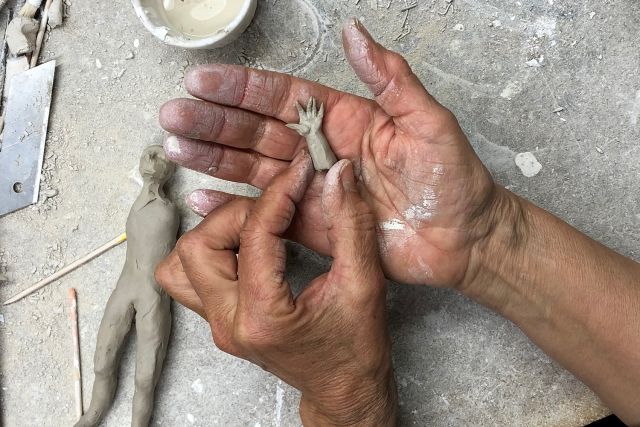
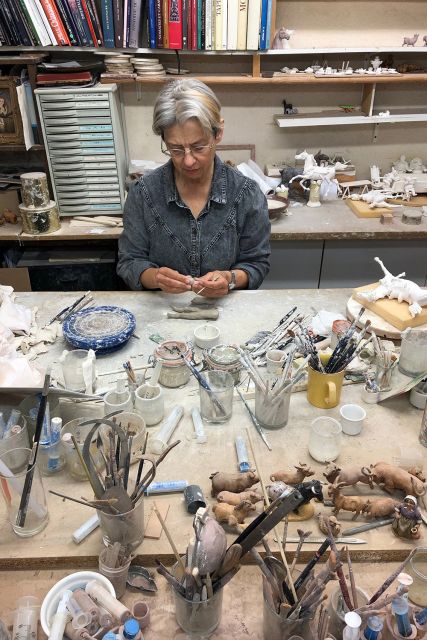
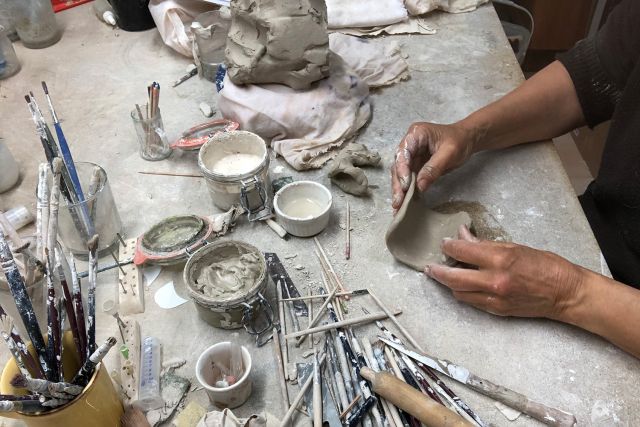
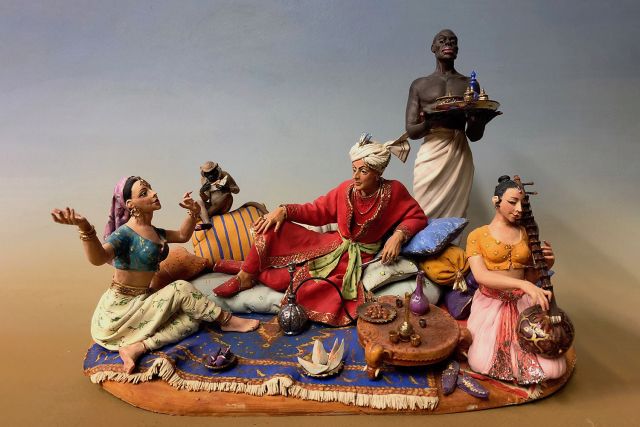
Liliane Guiomar
- Ceramicist
- Salignac, France
- Master Artisan
By appointment only
+33 673311895
Down to the finest detail
- • Liliane received a French craftsmanship award in 1986 and 2000
- • Technically diligent, she is also whimsical and imaginative
- • Her inspiration stems from masters such as Bosch, Bruegel and Cranach
Self-taught, perfectionist and almost obsessive in her attention to detail, Liliane Guiomar channels many crafts into one. She sculpts, paints, draws, travels to let herself be inspired. She has a great respect for the rules that govern her art. Attention to detail is her specialty, such as creating the folds of clothes, the veins of the skin on the back of hands or the shape of nails on small statuettes. It takes an enormous amount of time to complete every piece of work. "Nowadays people are in a hurry. For me there is a huge difference in the outcome based on the time I spend completing a project." Is this art at risk of extinction? Liliane believes it is more about passion and dedication. Her objects are entirely handmade, and she follows the times and stages of firing that have been handed down over the centuries.
Read the full interviewWorks
Photo: ©Liliane Guiomar

Photo: ©Liliane Guiomar
The elephant is made out of red sandstone, while the sultans and guards are made of white oxide-coloured sandstone. Eight firings in degressive temperatures ranging from 1200°C to 700°C were required.

Photo: ©Liliane Guiomar
On a red sandstone base stand a number of Danaids, hand modelled and sculpted in porcelain. Glass is used to represent water. Six firings from 1200°C to 600°C were required. All the subjects are worked individually before being glued to enamel.

Photo: ©Liliane Guiomar
This scene is inspired by Tiepolo. Sculpted and dressed sandstone models are laid and draped like fabric, and then the subjects are resculptered. The piece is coloured with oxides. This scene required 10 firings.

Photo: ©Liliane Guiomar
A scene of Marseille in the 18th century, this composition is entirely hand carved and coloured with oxides. Nine firings were necessary to achieve the final creation.






